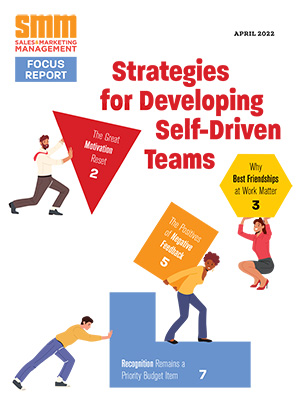Go-to-market (GTM) teams are constantly in a race to beat competitors to market with better products. But many still aren’t hitting their targets. New research from Mural reveals misalignment is the core culprit.
In Mural’s survey of GTM professionals, 85% said they experience frequent misalignment across sales, marketing and product teams. The result is disjointed messaging, missed timelines and frustrated teams all rowing in different directions.
For sales and marketing leaders, that misalignment translates to weaker pipeline, stalled deals and leads that don’t convert.
The good news is that the fix doesn’t require throwing more money or people at the problem. Instead, the answer is better alignment around three core areas: process, people and platform.
Process: Clear Goals for Focused Execution
Without clear alignment, even well-funded and well-intentioned launches fail. Marketing might position a product around innovation and future readiness, while sales emphasizes cost savings and operational efficiency. Both messages are valid. But when they’re delivered in isolation, the result is mixed signals, confused prospects and campaigns that attract low-quality leads.
Defined, measurable goals that map to product milestones and to each other are essential to solving this problem. Without shared clarity around ownership, timelines and messaging, GTM efforts often suffer from delays, rework and missed revenue targets.
A focused approach to cross-functional collaboration closes the loop between positioning, promotion and product to ensure everyone is on the same page from the start. Integrating agile principles like short planning cycles, sprint check-ins and iterative feedback helps teams stay on the same page as things change. Instead of waiting for a product to be complete, teams can test messaging early, adjust quickly and launch faster and with more confidence. This creates tighter feedback loops and go-to-market plans that reflect customer needs today.
People: Customer-Centric Collaboration
Sales hears pain points in the field. Marketing monitors market trends. Product builds a solution to match. However, when these perspectives stay siloed, everyone loses.
The solution is co-creation: bringing sales, marketing and product together early and often to align around the customer’s problem, not just internal priorities. This ensures the solution resonates in the market and supports the GTM motion.
Take a common scenario for example. The sales team hears customers struggling with mountains of data. Marketing sees a trend toward simplified data analytics. Product builds a new dashboard to summarize treasure troves of data. By co-creating, teams can shape a feature that directly solves the too-much-data problem with cohesive messaging that lands.
Design thinking methodologies strengthen this process by encouraging teams to align on customer needs before solutions are built. It’s not just about sharing updates across departments but building shared understanding and validating ideas early. That leads to fewer blind spots, clearer messaging and solutions that connect better with buyers from the start.
Platform: Centralized Visual Tools for Efficiency
Even the best processes break down when teams are operating from disconnected tools. According to Mural research, 87% of employees are still using outdated spreadsheets to collaborate.
Without real-time visibility, marketing misses key product updates, sales lacks insight into upcoming features, and product doesn’t get timely feedback from the field.
A shared, visual platform helps teams move faster by capturing insights in one place, surfacing customer feedback across departments, and enabling fast adjustments to products after they’re live.
These platforms can also support agile by making iterative planning and feedback loops more accessible across teams and functions. From a design thinking perspective, they act as shared canvases where teams can quickly visualize problems, sketch ideas and test assumptions before execution. This allows GTM teams to co-create in real time, so they can pivot faster and build with the customer in mind.
For example, if sales sees consistent demand for a specific integration, marketing can immediately adjust messaging to better qualify leads. Product teams can confirm feasibility and prioritize accordingly. Everyone stays on the same page, and the customer gets a more cohesive experience from top-of-funnel to purchase.
The Bottom Line
Misalignment is more than a workflow issue. It’s a major roadblock to revenue. For sales and marketing leaders, the path to stronger campaigns, faster sales cycles and higher conversions starts with aligning GTM teams on the Three Ps: clear process, collaborative people and a shared platform.
When teams move in sync, supported by agile and design thinking, feedback loops tighten, launches accelerate and solutions connect more directly to what customers actually need – turning alignment into a GTM advantage.





